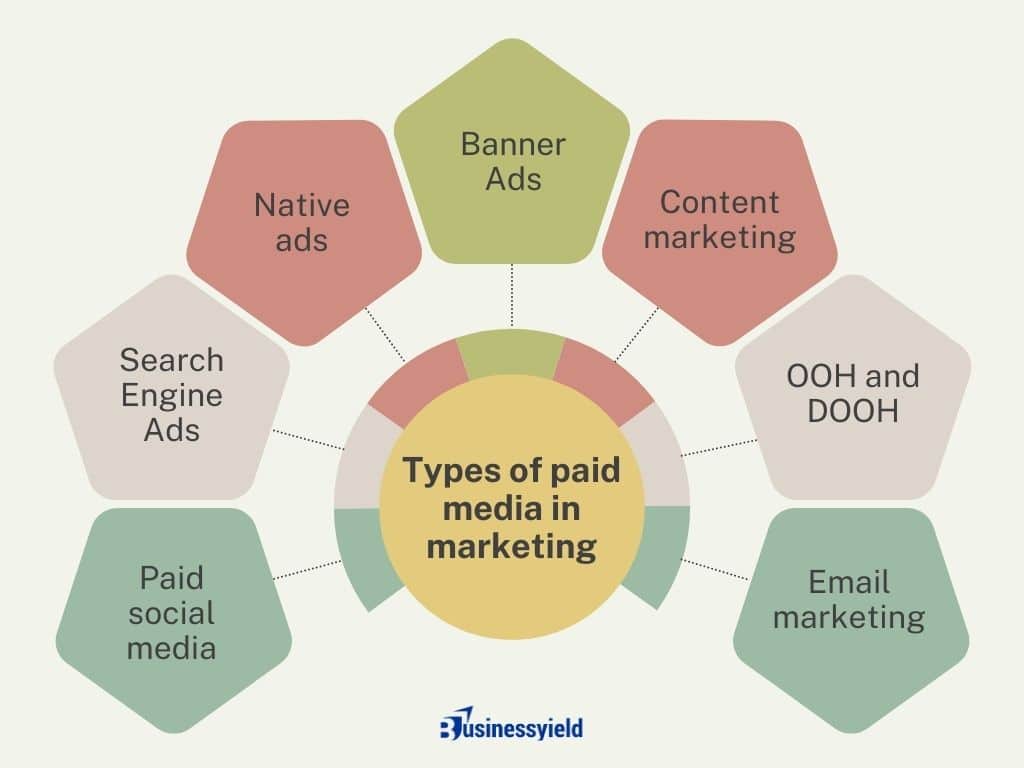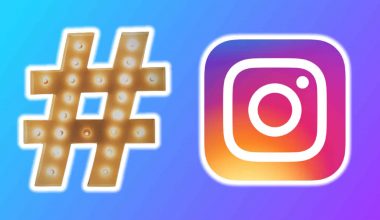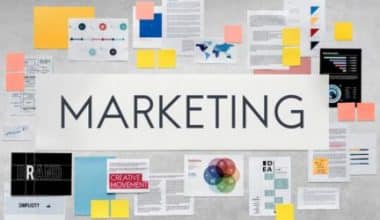The concept of paid media in marketing is as simple as it sounds: paying to expand your content’s reach. This is usually done through social media posts, display ads, paid search results, video ads, pop-ups, and other promoted multimedia.
However, just because it sounds simple doesn’t mean it is that straightforward. The internet is littered with several paid media content that aren’t bringing in the expected returns, despite the funds funneled into them. I mean, if simply paying for your content automatically ensures it turns in leads, every content would be a hit.
So, why do some paid media succeed where others don’t? And what can you do to ensure that yours brings in the desired results and success? That is what I will be addressing in this guide.
Key takeaways
- Paid media is that part of marketing and advertising that requires the purchase of ad space to promote a brand to larger audiences.
- It can be used to increase awareness at the top of the funnel or encourage sales toward the bottom.
- Buying ad space without considering how best to reach your target audience risks a low return on investment.
- There are three types of media in marketing – paid, earned, and owned media – all of which combine to make up your brand’s entire content strategy.
Understanding the concept of paid media in marketing
Paid media is that part of marketing and advertising that requires the purchase of ad space to promote a brand to larger audiences. Brands pay for content promotion to spread their message to audiences, at scale. This includes any advertising space you pay for. The most common channels for paid campaigns are social media and search engines. However, ads can be run on other platforms like Gmail, which appear in a user’s inbox.
Paid media can be used to increase awareness at the top of the funnel or encourage sales toward the bottom. It offers immediate, guaranteed access to new audiences and can also be targeted to users who indicate purchase intent.
Paid media is part of a brand’s strategy to increase traffic, sales, and conversions through clicks, and ultimately increase revenue. However, it can be risky — especially if you run campaigns without a good strategy. If your ad doesn’t generate results, it’s simply a waste of money since your target audience isn’t seeing what you paid for. You must develop strong tactics before committing any budget to your campaigns.
Paid media typically has two types of pay structures:
- Cost per click, or CPC media, where you pay for the ad space based on the number of times people click on the ad’s link. This makes it ideal for driving direct traffic to a specific campaign or website.
- Cost per mile, or CPM media, where you pay a set rate per thousand impressions or views, regardless of performance—best for brand awareness campaigns.
Media is an essential component of a digital strategy for brand awareness and revenue growth is media. It acts as the channel and real estate that carries the brand message and promotes the brand or the brand message.
Paid media in marketing channels
There are other types of paid media channels available that are not listed here, such as more traditional methods like direct mail or billboards. These paid media channels have a more physical presence, and here we will focus on digital channels.
Paid search
The most common platforms in paid search are Google and Bing search engines. Google is the leading search engine in market share, with its sites generating around 61% of user searches in the United States.
Microsoft (Bing) is the second leading search engine, generating almost 27% of user searches across its network of sites.
Less commonly used search engines that users leverage are:
- Yahoo.
- Ask Network.
- AOL.
The most common ad format on search engines is text-based. However, depending on the context of a user’s search, other formats may be shown, such as a Shopping ad.
Shopping ad formats consist mainly of a product image, name, price, and description.
SEE: BEST ONLINE SHOPPING: Top Site/Apps for Women, Clothes & Groceries
Paid social platforms have truly transformed over the past few years. Not only are there more social platforms to choose from, but there are also more ways for brands to advertise on each platform.
Some of the most common paid social platforms include:
- Meta (Facebook).
- Instagram.
- LinkedIn.
- TikTok.
- Pinterest.
- Snapchat.
- Twitter.
The most common ad format in social channels is placed within a user’s newsfeed as they scroll. These ads will either consist of one (or more) static images or a video as the main visual. Additionally, most paid social platforms offer different placement types for sponsored ads.
READ: WHAT ARE SPONSORED POSTS?
For example, Instagram and Snapchat can show ads between user stories.
Some paid social platforms are more beneficial for B2B companies than for B2C brands. For example, LinkedIn advertising consists mainly of B2B brands marketing their product or service to other professionals. Other platforms like TikTok and Snapchat may be better suited for B2C or e-commerce brands.
Whatever paid social channel you choose from, just make sure that your target audience is there as well.
Affiliate marketing
This type of marketing is when a company or brand pays affiliates for each sale they contribute.
One of the biggest channels for affiliate marketing is through bloggers. A blogger will mention another product or brand in their post and then get paid for every sale attributed back to that blog post. This type of marketing is beneficial because it allows your brand to expand and scale its reach through other popular influencers in your space.
Other popular affiliate marketing channels include:
- Email lists.
- Coupon sites.
- Review sites.
The beauty of affiliate marketing is that you can pick your partners and publishers. You should always choose partners aligned with your company’s objectives and goals.
SEE: A Simple Breakdown of Objectives vs Goals and How to Set Them
Programmatic & Display
Display ads are shown on a variety of channels and networks. Ads are displayed on numerous websites and apps depending on the network. While programmatic refers to the strategy of when/where/how to publish ads, display refers to the actual format of ads shown.
One of the most common display channels is the Google Display Network (GDN). This differs from programmatic because the GDN is a closed network owned by Google.
The channels programmatic uses for its ad buys are comprised of the channels listed here.
Types of paid media in marketing

The concept of paid media has evolved to become the structured, multifaceted operation it is today. In this section, we’re digging into the various ways you can promote your brand through paid media.
Here are the top five types of paid media in marketing.
Probably the most popular of the lot, paid social media needs no introduction. We see it in our everyday lives while scrolling through social media platforms. Almost every social platform now offers paid options, where you can pay to publish ads for platform users to see, depending on their interests, behavior, demographics, location, etc.

Facebook, Instagram, YouTube, LinkedIn, Twitter, Snapchat, and Pinterest are the top-performing channels for paid social ads. Each offers a business account that lets you create ads, or boost existing posts. Some even let you prompt users to message you, like your page, and help you get more leads and site visitors.
Instagram, TikTok, and Snapchat are also known for influencer marketing where an influential user is approached to promote brands/products to their loyal followers and fans in the brand’s niche. Influencers are paid a negotiated amount or a percent of the sales, or some even accept gifts and goodies in return for a post about the brand.
For example, once you sign up for Facebook’s Ads Manager, you can create and execute ad campaigns. Simply create a new campaign, select your objective, budget, audience, creative, and you’re good to go! You can also run these ads on Instagram if your account is connected and set up.
2. Search Engine Ads
These include Pay-Per-Click (PPC) and Pay-per-impression (PPI) ads.
PPCs are those ads that appear on a publisher’s/media owner’s site but the advertiser is charged only when a user clicks on it. These ads appear on search engine results pages almost like a native ad at the top, with an indication that it is an ad. They also appear on websites and blogs on the top, left, or right panel – or even at intervals within the content itself.
To effectively use PPC, you will first need to identify the relevant keywords and ensure the bid amount is reasonable enough not to impact your return on investments negatively. Executed correctly, your PPC ad can guarantee you pay for high-value customers with a good chance of converting.
PPI ads are charged each time your ad is displayed on a site, irrespective of interaction or being clicked upon. They are usually charged per thousand impressions, also known as CPM, as mentioned above. PPI ads can be cost-effective if your ad gets clicked on in addition to simply receiving an impression when compared to CPC ad prices.
READ: The Search Engine Optimization: A Comprehensive Guide for Business Success
For example, when a user searches for a keyword on Google that has been bid on, she will see the PPC ads followed by organic results on Google’s search engine results page.
3. Native ads
Native ads are those visual or text ads that match the design, typeface, and look of the website they are on. They show up on publisher websites as In-Feed, Sponsored/Recommended Content, Search & Promoted Listings, Promoted Stories, and so on. This type of ad also includes advertorials that inform and influence conversions.
According to Outbrain, native ads get 53% more attention than display ads. This is because ad fatigue doesn’t set in, and the ad doesn’t stand out as a purely commercial piece of content. Native ads are popular across social media channels such as Facebook, Twitter, and Instagram.
For example, Forbes displays native ads that appear as Promoted at the end of an article.
Banner ads, also known as display ads and web ads, are usually visual, image-based ads that show up on websites for a limited period and lead the user to the advertiser’s site or a specific landing page. This type of ad is embedded into the publisher’s website in the form of an image or gif.
The performance of the ad is recorded by its click-through ratio. This is the number of clicks that come through to the targeted landing page from the publisher’s site divided by the number of ad impressions.
For example, depending on targeted users’ interests, ads can be placed on sites they spend the most time on. A marketing professional can be targeted through MarTech Advisor or an HR professional on HR Technologist.
SEE: HR TECHNOLOGY: Top Companies, Conferences, and Trends
5. Content marketing
Paid content marketing is when you pay to promote and distribute content through various channels to reach a wider audience and achieve specific marketing goals. This could involve sponsored content like articles, podcasts, or videos created by influencers or other websites. The aim is to boost visibility and engagement with your brand.
6. OOH and DOOH
Out-of-home (OOH) advertising and digital out-of-home (DOOH) advertising reach users while they are outdoors and in public spaces. OOH has been a part of traditional advertising to reach users while they commute, shop, etc. via billboards, posters, bus shelters, benches, cinemas, etc.
This channel of advertising had no digital or programmatic involvement.
For example, Apple’s infamous ‘Shot on iPhone’ campaign is seen across the globe on billboards at prominent locations.
READ: Best Brand Extension Strategies for Expanding Your Brand Reach (Plus Examples)
DOOH has taken OOH to the digital realm with in-store kiosks, digital billboards, digital signage, display screens, etc. The DOOH ad process is becoming more valuable today owing to increasing capabilities and effectiveness. The ads are no longer printed banners but neon boards with fully functional screens that can even be interactive. DOOH is also programmatic, making it easier to use and measure.
For example, popular e-commerce sites use banner ads to retarget users who have browsed or searched for a product but didn’t complete the purchase.
7. Email marketing
Paid email marketing is when you pay to send promotional emails to a list of subscribers. These emails can advertise products, share news, or offer discounts. The goal is to engage the subscribers, encourage them to take action, and ultimately convert them into customers.
Strategies for implementing paid media in marketing
Buying ad space without considering how best to reach your target audience risks a low return on investment (ROI). Carefully plan your approach to maximize your ad spend. Along with content, consider factors like the channel, audience, and goals for a particular campaign.
Below is a listicle outlining five points you should consider when developing your paid media strategy.
Developing a paid media strategy
Benefits of paid media in marketing
One of the biggest benefits of paid media is its ability to reach a large audience. Paid media can help you reach more people than you could with your own channels, like your website or social media pages. Additionally, paid media allows you to target your audience more specifically than traditional advertising methods can. You can target people based on their interests, demographics, and even their purchase history.
This means that you can reach the right people with your advertising, increasing your chances of getting a good ROI.
A paid media strategy is also important for your business because it’s a promotional avenue that offers you the chance to create exposure for your content and increase your brand awareness in a short period of time. Unlike owned and earned media, which often rely on organic means to drive visitors to content, paid media is a far more direct method of outreach that can target very specific topics—often relating to an individual service or product.
SEE: PRODUCT MARKETING STRATEGY: Overview, Examples, Job Description (+ free courses)
For this reason, your marketing team needs to have a PPC strategy for their content to get it in front of the right audiences at the right time.
Finally, paid media is a great way to boost your online presence. Paid media channels like Google Ads and Facebook ads can help you rank higher in search engine results pages and increase your reach on social media.
Types of media in marketing
There are three types of media in marketing – paid, earned, and owned media. Each media type serves a specific purpose, and they all combine to make up your brand’s entire content strategy.
Earned media is the organic response your brand gets from other sources. It is content that other people and publishers produce about your company. This includes reviews, social media shares, press about your brand, and more. It is most effective at the top of the funnel when a potential customer is first engaging with your brand.
Local Consumer Review reports that 77% of consumers read online reviews for businesses in their area. Hence, earned media is a great approach to boost your reputation and give leads a good first impression of your brand.
There are different ways to invest in earned media. You can offer incentives to customers who leave reviews, run contests and giveaways to generate social shares or build relationships with media sources in your industry.
Owned media, on the other hand, is content that your brand owns and produces. Blog posts and social media posts are examples of owned media. Case studies, PDFs, and product demos can also be effective as owned media.
Most users who come to your owned channels already know about your brand or are interested in learning more about your product or solution. So, owned media is often more relevant to customers in the middle of the sales funnel.
This type of content is vital for generating organic traffic and overall engagement. It’s designed to give your audience a deeper look at your products or services, so they can build confidence in your brand and eventually become loyal customers.
Understanding where each type of media fits in the sales funnel helps you build a well-rounded digital presence.
What Is Media Buying In Marketing? How It Works, Types, Examples and Process
CHANNEL MANAGEMENT: Meaning, Examples & Why It Is Important
How to Advertise on Google: Beginners Guide






